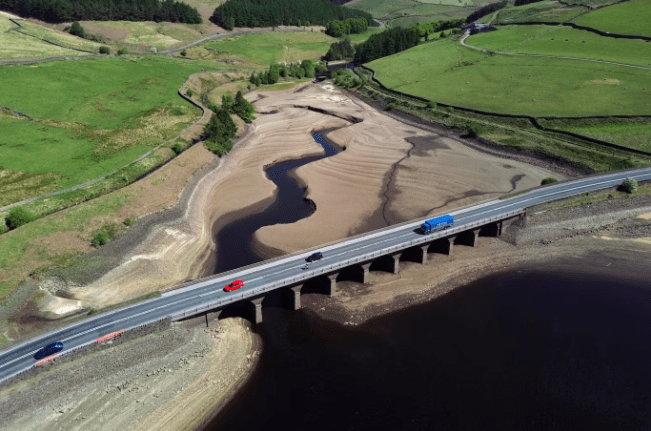Households warned of possible water restrictions as dry spell grips the country
Millions of UK homes may face water restrictions this summer as the nation contends with its driest start to a year in decades. England, in particular, is experiencing its driest spring since 1963, prompting warnings from the Environment Agency of a “medium” risk of drought if substantial rainfall fails to arrive.
Though hosepipe bans haven’t been announced, the situation could change rapidly. The Environment Agency (EA) has urged water suppliers to reduce leakage and encourage customers to use water sparingly.
Thames Water, which serves around 16 million people, is already preparing for the possibility of restrictions if dry conditions continue.
This prolonged dry spell comes after record-breaking rainfall over the previous year. Between October 2023 and September 2024, England endured its wettest 12-month period on record, resulting in floods and widespread agricultural disruption.
Now, the tables have turned. The country is witnessing extreme fluctuations in weather patterns – a clear signal, experts say, of the growing impact of climate change.
Scotland and Northern Ireland have also reported their driest starts to the year in decades:
- Scotland: Just 281.8mm of rain between January 1 and May 11 – the lowest since records began in 1931.
- Northern Ireland: Only 232.9mm in the same period – the lowest since 1953.
In England, the north-west and north-east have experienced their driest start to a calendar year since 1929. February to April marked the driest stretch for the country overall since 1956.
Water levels in April plummeted to record lows at six EA monitoring stations across northern England, including:
- River Don at Doncaster
- River Swale at Crakehill Topcliffe
- South Tyne at Haydon Bridge
- River Wharfe at Tadcaster
- River Wear at Witton Park
- River Mersey at Ashton Weir
Other rivers, including the Dove, Tyne and Lune, were also deemed exceptionally low for this time of year.
Reservoirs haven’t fared much better. While England’s overall reservoir storage stood at 84% by the end of April, levels in north-west England dropped to 73%. Notably, Haweswater and Thirlmere reservoirs in Cumbria dipped to 62%, impacted by both low rainfall and earlier maintenance.
South and East Also Drying Up
Between March 1 and May 11:
- South-east England recorded just 34.9mm of rain – the fourth lowest since records began.
- North-east England saw only 39.5mm – the lowest since 1938.
As rainfall continues to stay low, concerns grow that households across various regions may soon have to limit water usage.
Thames Water CEO Chris Weston told the Environment, Food and Rural Affairs Committee: “I am confident we won’t run out of water, I’m not confident we won’t have to restrict usage, because that will depend on what the weather does and what rainfall happens between now and the summer.”
Industry body Water UK echoed the urgency: “Following the driest start to spring in nearly 70 years, water companies have been taking two actions: first, they are setting new records for repairing leaks; and second, they are moving water across their regions to relieve the driest areas.”
They also encouraged the public to make small changes at home, such as watering plants early in the morning, relocating potted plants to shaded areas, and allowing lawns to turn brown naturally, to help conserve water.
The National Trust celebrated a stunning spring display of cherry blossoms, bluebells, and hawthorn – a result of last year’s heavy rainfall, followed by spring sunshine. But the good news may be short-lived.
“With this year’s spring set to become one of the driest on record, this initial display is likely to be followed by less good performance into the summer,” said Rebecca Bevan, senior national consultant on plant health and sustainability at the Trust.
“Drought conditions can lead to slow growth, poor flowering and an increased risk of diseases such as blackspot and mildew.”
She advised against watering gardens with mains water and instead suggested the installation of water butts to collect rainwater for sustainable use.
Richard Thompson, the Environment Agency’s deputy director of water, emphasised the long-term challenge: “The changing climate means we will see more summer droughts in the coming decades. The last two years were some of the wettest on record for England but drier conditions at the start of this year mean a drought is a possibility and we need to be prepared.”
He welcomed growing public awareness around water conservation and pushed water companies to roll out smart meters and fix leaks more aggressively.
The UK stands at a climatic crossroads – swinging between record floods and threatening droughts. As the summer approaches, the focus turns to water conservation, preparedness, and climate resilience.
The message from authorities is clear: act now to avoid tougher measures later. If the rain doesn’t return soon, the tap could tighten.






